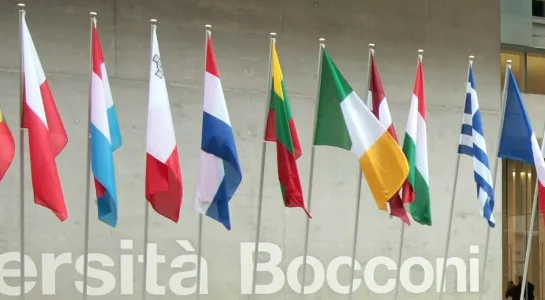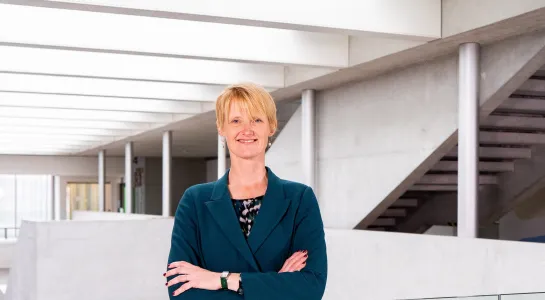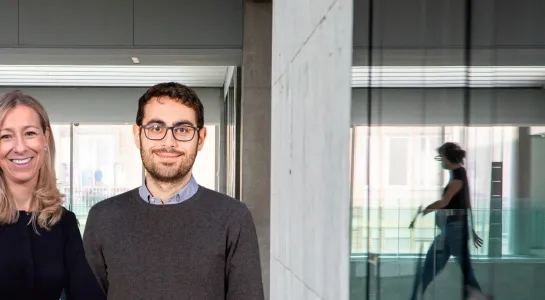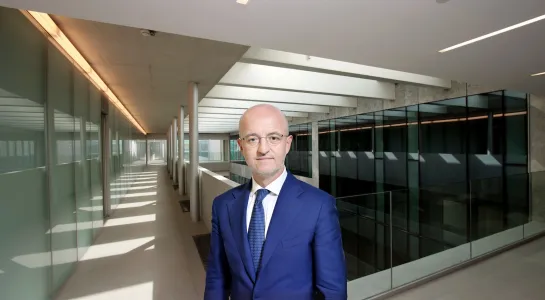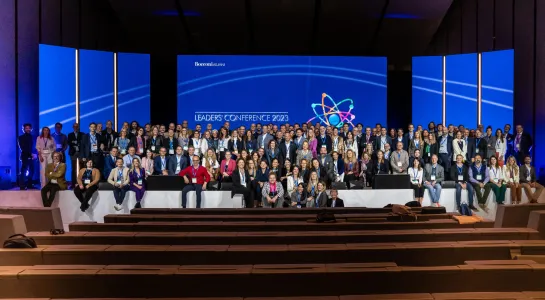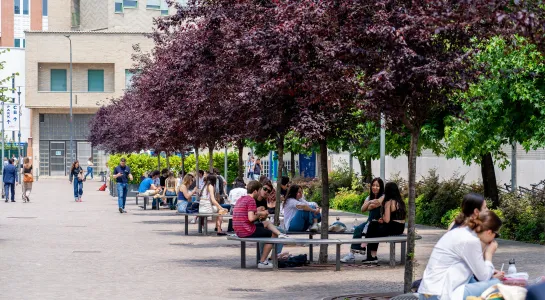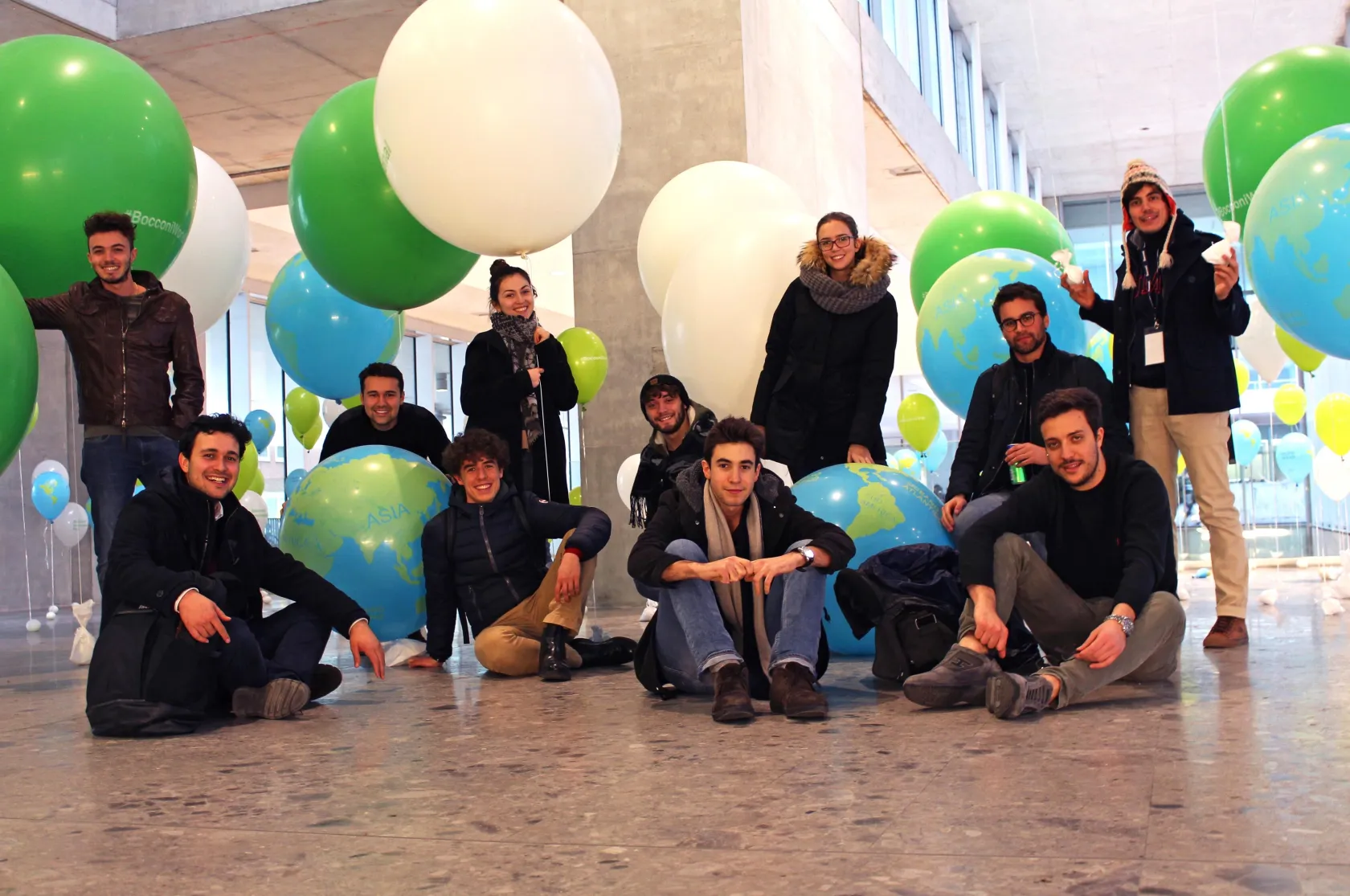
Bocconi in the World. The World at Bocconi
It was the first time Innocenzo Gasparini had seen colored lights on Christmas trees. This custom did not yet exist in Italy and he made a note of this in a letter. Gasparini, who would become Rector about thirty years later, was in the United States, in New York, where he was sent shortly after the World War II by Giovanni Demaria, who was Rector at the time. The mission was to get in touch with American entrepreneurs who could finance an idea that was on Demaria's mind: to open a Bocconi branch in the Big Apple. The project was later abandoned, but the event was significant for one reason: it demonstrated that Bocconi University was already interested in expanding its international scope many years ago.
Open doors
Today, the University's international exposure can be seen in the numbers: 288 partner universities in 55 countries around the world, 37 Double Degrees and more than 4,500 exchange students (including incoming and outgoing students) in the 2023-2024 academic year, in addition to the almost 4,000 non-Italian students enrolled in the various programs. To look at a comparison that shows the growth over the last 40 years, in 1984-1985 there were just over 30 exchange students. Focusing on internships abroad – another important international opportunity for students – the 2023 figure reached 1,236 in 61 countries, 25% of all the internships carried out in 2023. Here, too, a comparison over time shows how much has changed: in 1995 there were only a few dozen internships abroad, while the total since they were first offered to today is over 23,000.
"Bocconi was one of the first Italian universities to create exchange agreements. It was 1974 and Bocconi signed its first agreement with a French university and with one in the United States," says Rector Francesco Billari. "In the last quarter of a century there has been an acceleration and today we have almost 300 partner universities on six continents. In addition, we are involved in numerous global networks and alliances between different universities, such as CIVICA, CEMS and PIM (Partnership in International Management)." There are a total of 13, including Themis (International Legal Network of Excellence), GNAM (Global Network for Advanced Management, with SDA Bocconi) and U7+, the Alliance of World Universities, that we wrote about during the alliance’s last Summit hosted here at Bocconi.
Years ago, the drive for internationalization was developed to bring Bocconi to the world, through international opportunities for students and through the continuous expansion of the alumni pool (today the Bocconi Alumni Community boasts 75 Chapters). "The additional element that has characterized the last 25 years has been to bring the world to Bocconi as well," Billari continues. "To do this, the University has increasingly spoken English (the first programs entirely in English were the MBA in 1991 and the DIEM in 2001), and it has welcomed more and more international students and recruited more and more faculty from abroad." Today, for example, there are 105 non-Italian professors, 25% of the 422 who make up the core faculty, while applications from students from abroad have increased by more than 30% in the last year (a fun fact is that of the applications from non-Italian students, the most represented nationality is that of French students). "From an internationalization point of view, at the beginning of each year we surpass the previous year, with lots of different backgrounds: there are over 100 nationalities present on our campus."
A history spanning more than a century
Gasparini was writing from New York in the mid-20th century, but Bocconi's openness to the world dates back even further, practically to its inception. Carlo Parravicini, the first graduate in 1906, defended a thesis with a significant title: "The Great Routes of International Trade". Then, in 1907 Scipione Bolis focused on "The Far East and Italian Trade". Some, like Riccardo Natali, went abroad to complete their thesis. In a letter published by Bocconi historian Marzio Romani in 'Building the Ruling Class – Letters to a Master', the student recounts his experience: "I am enthusiastic about this trip that has given me the opportunity to have views that I could never have had staying in Italy," he writes. "I know that my work will be very imperfect, but I hope that the professors assessing it and then the relevant institutes in Rome, with whom I have been in contact for some time, will understand my effort to provide a complex and general idea of Persia." In the first decades of the century, many alumni were already working abroad.
An agreement between Bocconi and the Serena Foundation also played a fundamental role in the internationalization process. After funding Italian language chairs at Oxford, Cambridge and Birmingham in the early 1920s, Arturo Serena – an English tycoon of Italian origin – decided to allocate one million lire to creating special chairs dedicated to focusing on Anglo-Saxon culture in Italy. There were two partner institutions, the British Council in Florence and Bocconi University. Bocconi would use the interest deriving from part of the capital made available by Serena to organize events, conferences, lectures series and seminars on Anglo-Saxon economics and culture. It was thanks to this initiative, for example, that the likes of Ezra Pound, among others, were able to give lectures. Thanks to this collaboration, moreover, until World War II many students at the University had the opportunity to learn at universities and institutions in the UK.
The best of both worlds
In short, the University has a long-standing history of being open to the world. It has been full of cross-contaminations that today sees the university looking towards a global audience. "Bocconi has gone from Milan, to Italy, to Europe, to the world. It has held firm to its identity, but today it aims to increasingly take on the role of a global player," underlines Francesco Billari. "For many from abroad, Milan is seen as Italy’s most European and global city and it represents the best of both worlds in the public imagination. The same can be said of the spirit that guides the University’s internationalization: an aspiration to represent the best of both worlds, the Italian and the global."
